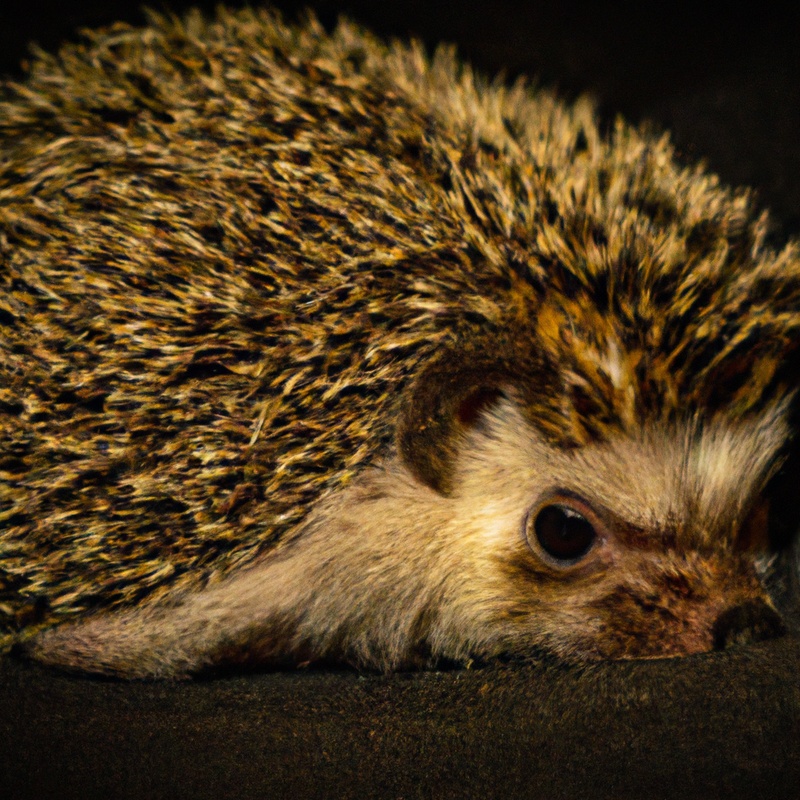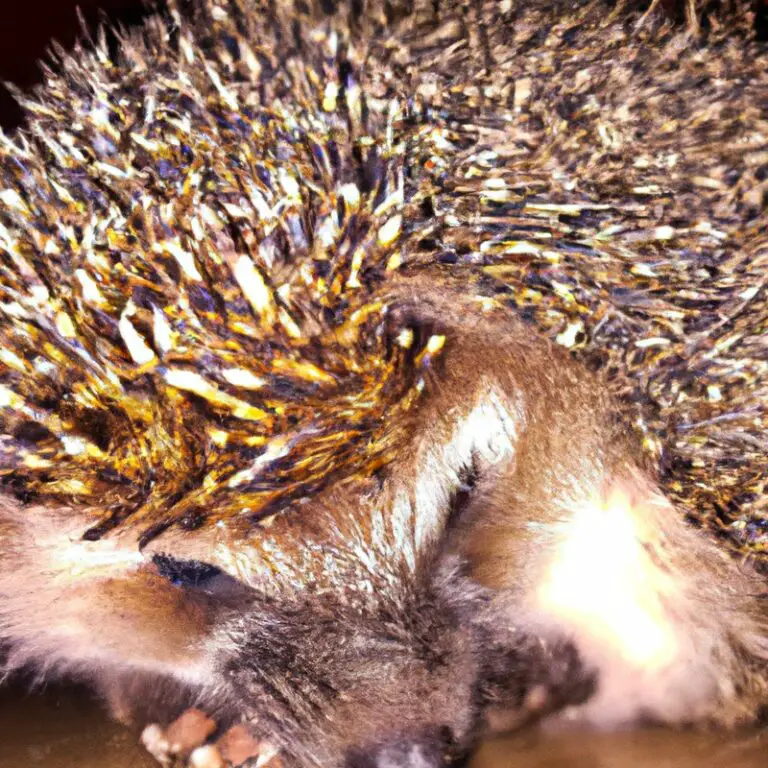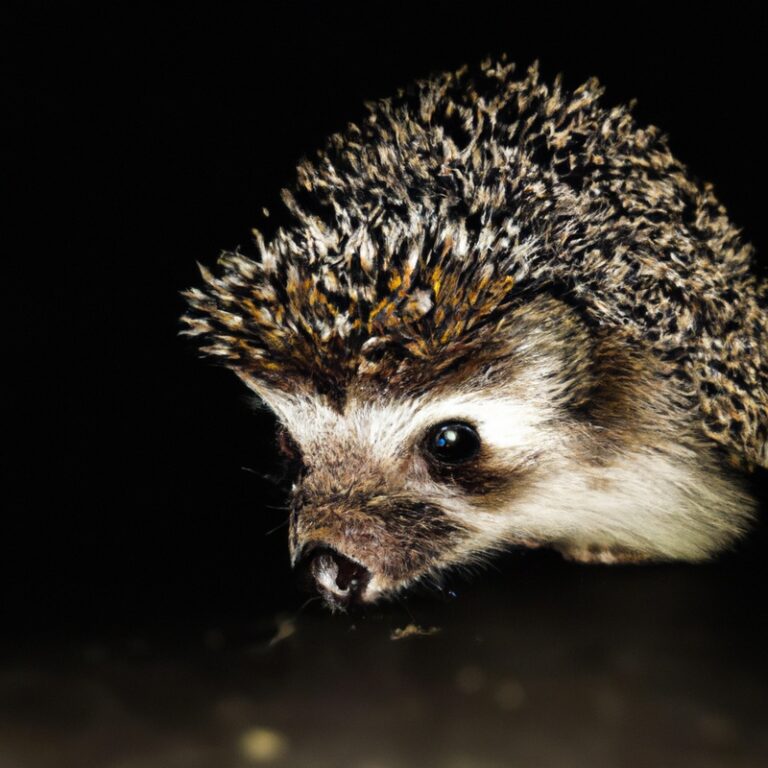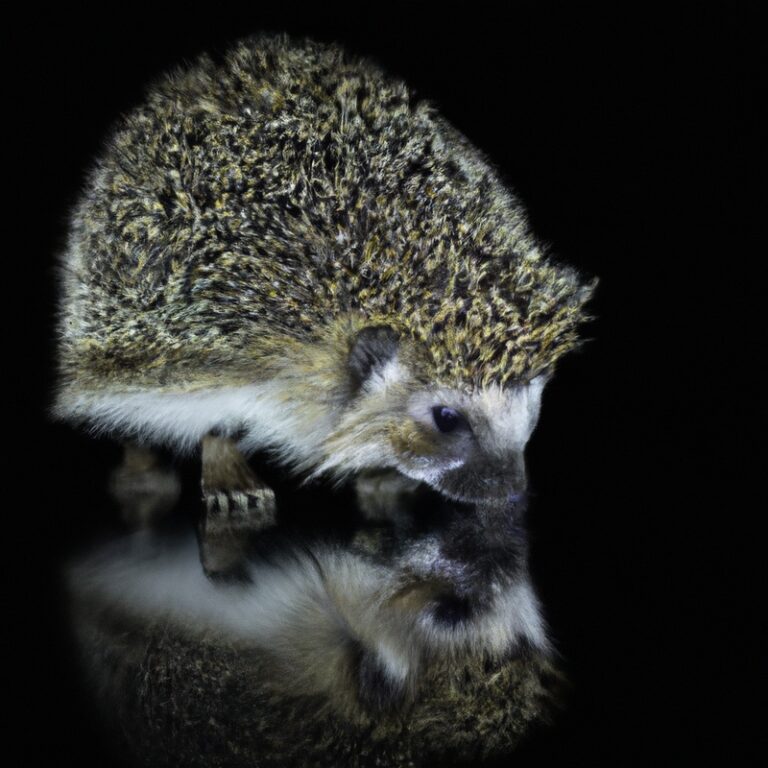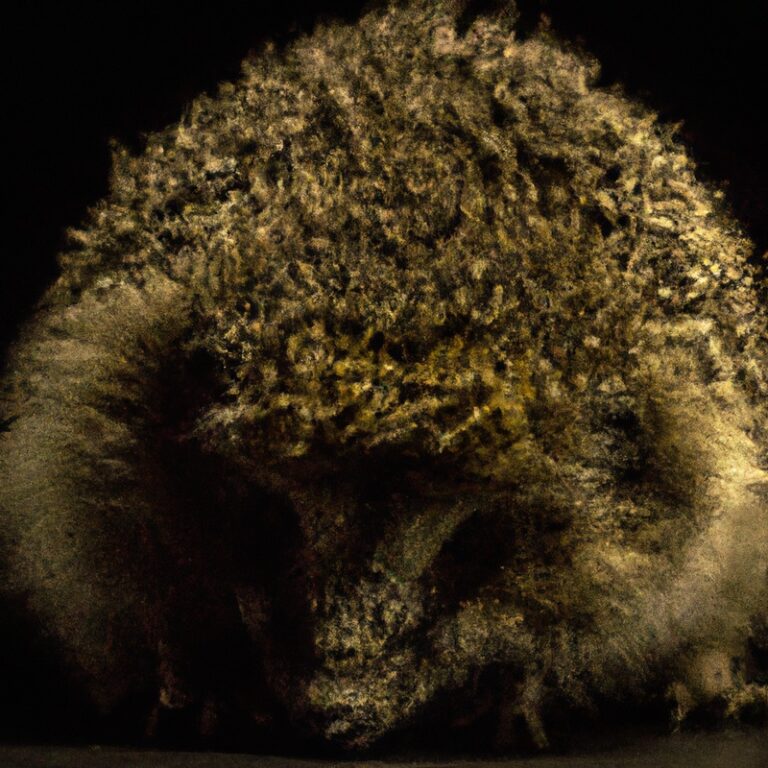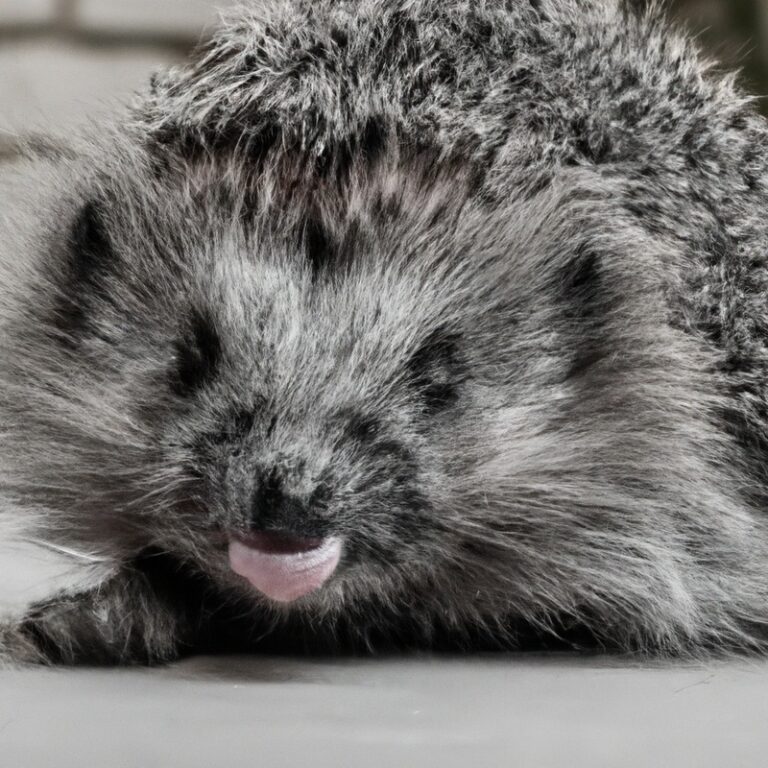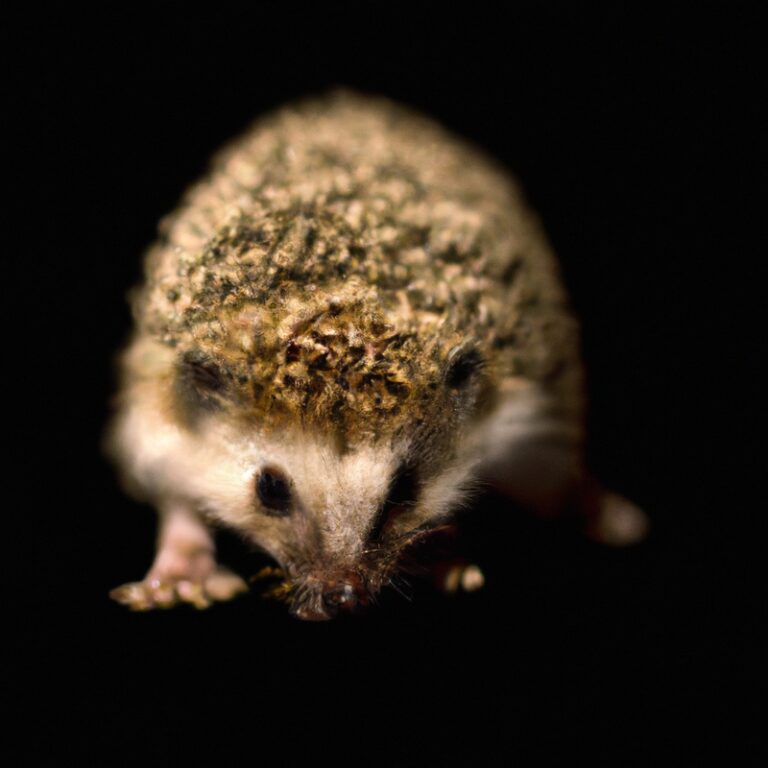What Are The Predators Of Hedgehogs?
Key Takeaways:
- Hedgehogs have several natural predators, including foxes, owls, and badgers.
- Domestic cats and dogs can also pose a threat to hedgehogs.
- Hedgehogs use their spines as a defense mechanism against predators.
- Providing hedgehogs with a safe and secure habitat can help protect them from predation.
Do you know who the enemy of the adorable hedgehog is? They may be cute and prickly, but hedgehogs face a range of predators in the wild.
In this article, we will delve into the natural enemies of hedgehogs, including the formidable badger, clever fox, stealthy owl, majestic eagle, and slithering snake.
But that’s not all – we’ll also explore the man-made threats that hedgehogs face, such as road traffic and pesticide use. Don’t worry – we won’t leave you hanging.
We’ll provide tips on how to protect hedgehogs, including creating hedgehog-friendly gardens, reducing man-made threats, and joining conservation efforts.
Plus, we’ll answer some frequently asked questions along the way. So, let’s jump right in and discover why hedgehogs need our help!
| Predator | Description |
|---|---|
| Foxes | Foxes are major predators of hedgehogs. They are skilled hunters and can easily catch and prey on hedgehogs. |
| Dogs | Unleashed dogs can pose a threat to hedgehogs, especially if they are not familiar with them. |
| Badgers | Badgers are known to prey on hedgehogs when they come across their burrows or hiding places. |
| Owls | Owls, particularly larger species, such as barn owls and tawny owls, can hunt and feed on hedgehogs. |
The Natural Enemies of Hedgehogs
Hedgehogs have several natural enemies, including badgers, foxes, owls, eagles, and snakes.
1. The Badger
The badger is one of the main predators of hedgehogs. They are known to prey on hedgehogs by digging them out of their burrows or catching them when they are out foraging.
Badgers have strong claws and can easily break open a hedgehog’s spiky defense.
They are attracted to the scent of hedgehogs and are particularly active at night, making it easier for them to hunt. Hedgehogs often try to roll into a tight ball as a last resort, but this defense mechanism is not always successful against persistent badgers.
2. The Fox
The fox is one of the main predators of hedgehogs. They are clever and agile hunters, with keen senses that help them locate their prey.
Foxes are known to take advantage of the hedgehog’s vulnerability when it rolls up into a defensive ball, as they can easily flip them over and attack the unprotected belly.
They have sharp teeth and powerful jaws that allow them to kill and consume hedgehogs. In areas where foxes are present, hedgehog populations may decline due to predation.
3. The Owl
The owl is one of the natural predators of hedgehogs.
Owls are skilled hunters that can easily capture hedgehogs with their sharp talons and strong beaks.
These nocturnal birds of prey have excellent vision and hearing, making it easier for them to locate and catch their prey.
They are particularly fond of small mammals like hedgehogs, which make up a significant portion of their diet.
The owl’s ability to fly silently further enhances its hunting prowess, allowing it to surprise its prey.
So, hedgehogs need to be cautious when an owl is around.
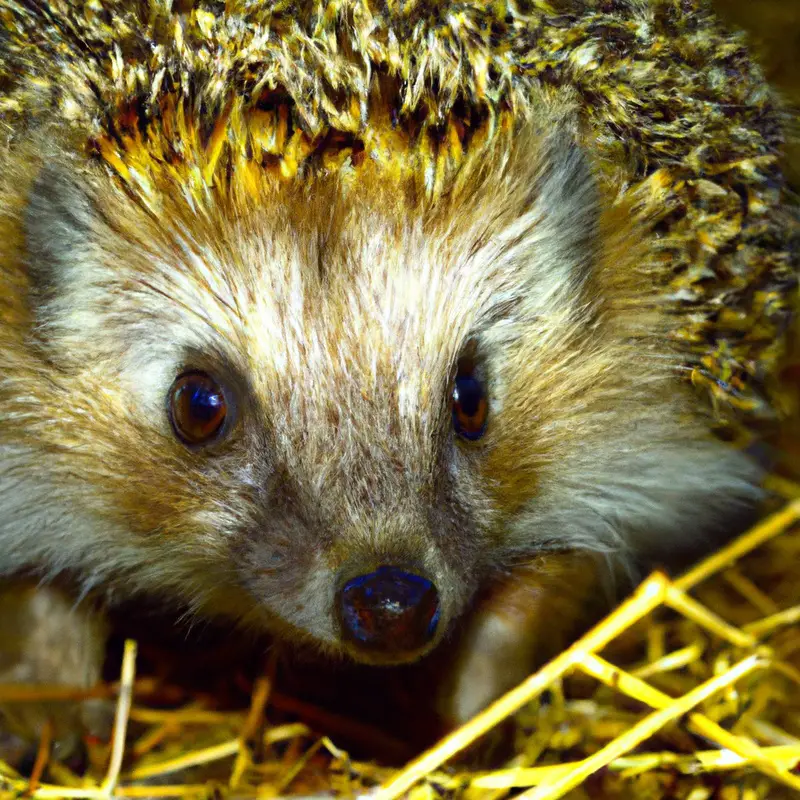
4. The Eagle
The eagle is one of the predators of hedgehogs.
With its keen eyesight and powerful talons, the eagle is capable of swooping down and capturing hedgehogs as prey.
Hedgehogs often fall victim to these aerial predators, as they are not able to defend themselves effectively against such an attack.
The size and strength of eagles make them a significant threat to hedgehog populations.

5. The Snake
The snake is one of the natural predators of hedgehogs.
Snakes can pose a threat to hedgehogs, as they have the ability to overpower them and consume them as prey.
Snakes are skilled hunters and can use their stealth and agility to sneak up on hedgehogs.
With their sharp teeth and powerful jaws, snakes are capable of capturing and swallowing hedgehogs whole.
Hedgehogs rely on their spines for defense, but they may not be able to effectively defend themselves against a snake attack.
It is important for hedgehogs to stay vigilant and find safe places to hide from snakes to avoid becoming prey.
Man-Made Threats to Hedgehogs
Man-made threats to hedgehogs include road traffic, garden tools and machinery, pesticides and poisonous plants, domestic pets, and habitat destruction caused by urbanization.
1. Road Traffic
Road traffic is a significant threat to hedgehogs. They often become victims of roadkill while attempting to cross roads.
Hedgehogs have a habit of rolling into a ball when they feel threatened, which unfortunately doesn’t protect them from fast-moving vehicles.
To help protect hedgehogs from road traffic, it is important to drive cautiously, especially at night when they are most active. Additionally, creating hedgehog-friendly road barriers and wildlife crossings can also reduce the risk of accidents.
2. Garden Tools and Machinery
Garden tools and machinery can pose a threat to hedgehogs.
Hedgehogs often hide in dense vegetation or under piles of leaves, and when you use garden tools like lawnmowers, trimmers, or leaf blowers, you might accidentally harm them.
Hedgehogs have a habit of curling up into a ball when they feel threatened, and they might not be able to move out of harm’s way quickly enough.
So, when you’re using garden tools and machinery, it’s important to be cautious and check for any hiding hedgehogs before you start.
3. Pesticides and Poisonous Plants
Pesticides and poisonous plants pose a significant threat to hedgehogs. These substances are often found in gardens and can be ingested by hedgehogs when they forage for food.
Pesticides can directly harm hedgehogs, while toxic plants like foxgloves and lilies can be fatal if consumed.
To protect hedgehogs, avoid using pesticides in your garden and remove any poisonous plants that may be present. Creating a hedgehog-friendly environment will help ensure their safety.
4. Domestic Pets
Domestic pets, such as cats and dogs, are a significant threat to hedgehogs.
They are natural hunters and may attack and injure hedgehogs if given the chance.
Cats, in particular, are skilled predators and can cause serious harm.
To protect hedgehogs from domestic pets, it is important to supervise outdoor activities and keep pets on a leash or within a secure enclosure.
Providing separate feeding areas for pets and hedgehogs can also help minimize interactions and potential conflicts.
5. Habitat Destruction and Urbanization
Habitat destruction and urbanization pose a significant threat to hedgehogs.
As natural habitats are destroyed to make way for buildings, roads, and agricultural land, the available space for hedgehogs to live and find food diminishes.
Urban areas with their concrete landscapes also limit the resources hedgehogs need to survive, such as vegetation and insects.
This loss of suitable habitat forces hedgehogs to venture into dangerous territories, increasing their risks of predation and injury.
It is crucial to address the issue of habitat destruction and urbanization to ensure the survival of hedgehog populations.
How Can We Protect Hedgehogs?
Protecting hedgehogs involves creating hedgehog-friendly gardens, reducing man-made threats, creating hibernation spots, providing food and water, and joining conservation efforts.
1. Hedgehog-Friendly Gardens
To create a hedgehog-friendly garden, you can start by leaving areas untouched where hedgehogs can find shelter.
Avoid using pesticides and chemicals that can harm them.
Provide a water source and some food, like cat biscuits or mealworms.
Create hedgehog highways by making small holes in fences or building a hedgehog tunnel.
Avoid garden netting that can entangle them.
Finally, spread the word about hedgehog conservation to help protect these adorable creatures!
2. Reducing Man-Made Threats
To reduce man-made threats to hedgehogs, there are a few simple steps you can take:
- Secure your garden: Put up fences or barriers to prevent hedgehogs from wandering into dangerous areas, such as roads or swimming pools.
- Check for hazards: Remove or secure any potential hazards in your garden, like netting, gardening tools, or chemicals. These can harm or even kill hedgehogs.
- Avoid using pesticides and poisons: Opt for natural alternatives in your garden to keep pests under control. Chemical pesticides can be harmful to hedgehogs if ingested.
- Create hedgehog-friendly habitats: Provide safe spaces for hedgehogs to nest and hibernate, such as piles of leaves, log piles, or purpose-built hedgehog houses.
- Raise awareness: Educate your friends, family, and community about the importance of hedgehog conservation and the need to reduce man-made threats.
By taking these steps, we can all play a part in protecting hedgehogs and ensuring their continued survival.
3. Creating Hedgehog Hibernation Spots
Creating hedgehog hibernation spots is important for their survival.
Here are some ways you can do it:
- Provide shelter: Build or place hedgehog houses in your garden, using suitable materials like wood or natural vegetation.
- Add leaf piles: Create a cozy environment by raking leaves into a pile in a quiet corner of your garden. Hedgehogs can burrow into it for hibernation.
- Avoid disturbing their habitat: Limit garden maintenance during hibernation periods, as hedgehogs prefer undisturbed areas to hibernate.
- Provide food and water: Leave out fresh water and supplementary food like cat or dog food to help hedgehogs before they hibernate.
By taking these simple steps, you can provide safe and inviting hibernation spots for hedgehogs, contributing to their well-being and population conservation.
4. Providing Food and Water
To provide food and water for hedgehogs, you can follow some simple steps.
Firstly, offer a shallow dish of fresh water in your garden.
Ensure it is accessible and replenish it regularly.
Secondly, provide food like wet cat or dog food, meaty cat biscuits, or specialized hedgehog food.
Avoid giving them milk as it can upset their stomach.
Thirdly, place the food in a shallow dish and put it out in the evening.
Hedgehogs are nocturnal and will come out to feed at night.
Remember to remove any uneaten food in the morning to avoid attracting other pests.
5. Joining Conservation Efforts
One way to contribute to the conservation of hedgehogs is by joining efforts with local organizations and initiatives. These groups often have programs in place to protect and preserve hedgehog habitats.
By volunteering your time or making donations, you can support their conservation efforts.
Another way to help is by spreading awareness about hedgehog conservation. Sharing information on social media, organizing educational events, or writing articles can help raise awareness and inspire others to take action.
Let’s come together to protect these amazing creatures!
Frequently Asked Questions (FAQs)
1. Are hedgehogs dangerous?
Hedgehogs are generally not dangerous to humans. They are small, shy animals that prefer to avoid confrontation.
However, if they feel threatened or cornered, they may curl into a ball and use their spiky quills as a defense mechanism.
It’s important to approach hedgehogs with caution and respect their personal space. If you encounter a hedgehog, it’s best to observe from a distance and not attempt to handle or provoke them.
2. Can hedgehogs defend themselves against predators?
Hedgehogs have some defense mechanisms to protect themselves from predators.
They can roll into a ball, exposing only their spiky exterior, which makes it difficult for predators to attack them.
Their spines serve as a protective shield.
Hedgehogs also have the ability to hiss, puff up their spines, and even perform a somersault when threatened.
However, these defense mechanisms might not be effective against all predators.
3. Do hedgehogs have any other natural enemies?
Hedgehogs do have other natural enemies. Some of their predators include foxes, badgers, birds of prey such as owls and hawks, and domestic cats.
These animals see hedgehogs as a potential source of food and may hunt them if given the opportunity.
Hedgehogs have developed various defense mechanisms, such as rolling into a tight ball and using their spines as protection, to ward off these predators. However, they are still vulnerable, especially when caught off guard or in unfamiliar environments.
4. How can I attract hedgehogs to my garden?
To attract hedgehogs to your garden, create a welcoming habitat.
Provide shrubs, hedges, and thick vegetation for them to hide and nest in.
Leave some areas of your garden wild rather than overly manicured.
Install a hedgehog house or create a secluded area with leaves and branches for them to rest.
Offer them a water source, such as a shallow dish, and leave out food like cat or dog food or specialized hedgehog food.
Avoid using pesticides and chemicals in your garden to avoid harming them.
5. What should I do if I find an injured hedgehog?
If you find an injured hedgehog, there are a few steps you can take to help it. First, carefully approach the hedgehog, using gloves or a towel to handle it to avoid getting hurt yourself.
Place the hedgehog in a well-ventilated box lined with a clean towel or newspaper.
Offer the hedgehog some water, but avoid feeding it unless instructed by a professional. Contact a local wildlife rescue or veterinarian who can provide the appropriate care and treatment for the hedgehog.
Final Verdict
Hedgehogs face a variety of predators in their natural habitats, including badgers, foxes, owls, eagles, and snakes.
These predators pose a significant threat to the survival of hedgehogs, but man-made threats also play a role, such as road traffic, garden tools, pesticides, domestic pets, and habitat destruction.
To protect hedgehogs, it is important to create hedgehog-friendly gardens, reduce man-made threats, provide hibernation spots, offer food and water, and support conservation efforts.
By taking these steps, we can help safeguard hedgehogs and ensure their survival for future generations.
Act now to make a difference!

